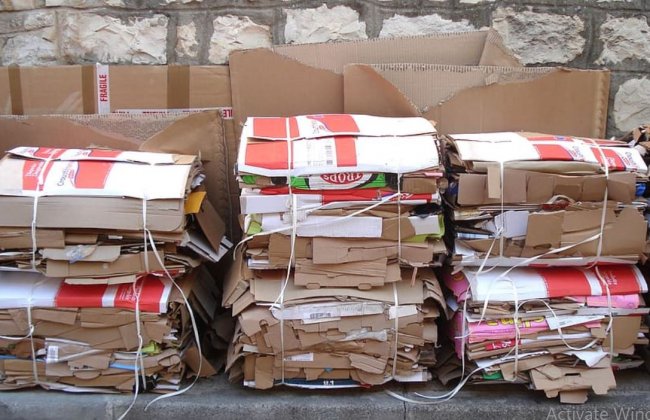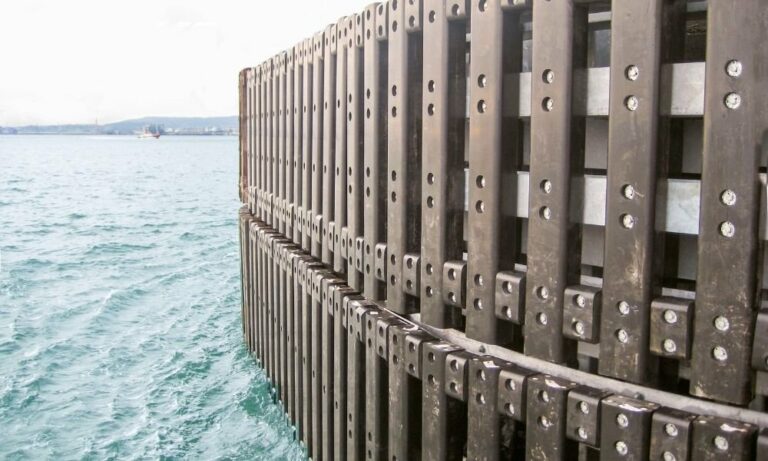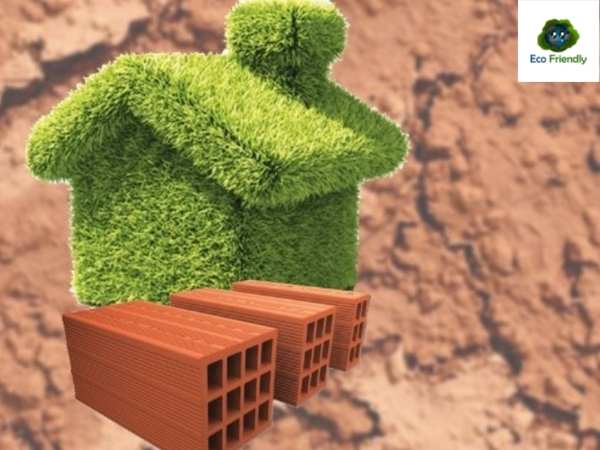Exploring Eco-Friendly Materials
Looking for Eco-Friendly Materials to incorporate into your lifestyle or projects? Well, you’re in luck! In this article, we’ll delve into the world of sustainable materials and explore some fantastic options that are kind to the environment.
From renewable resources to recycled materials, there are numerous choices available that not only reduce waste but also minimize our carbon footprint. So, if you’ve ever wondered, “What are some eco-friendly materials?” you’ve come to the right place! Let’s dive in and discover innovative and environmentally friendly alternatives for a greener future.
What Are Some Eco-Friendly Materials?
When it comes to making sustainable choices, opting for eco-friendly materials is an important step. Eco-friendly materials are those that have minimal negative impact on the environment throughout their lifecycle. They are typically renewable, recyclable, biodegradable, and have a lower carbon footprint compared to their conventional counterparts. In this article, we will explore a variety of eco-friendly materials that can be used in various applications, from construction to fashion. Let’s dive in!
1. Bamboo
Bamboo is a versatile and sustainable material that has gained popularity in recent years. Here’s why:
- Renewable: Bamboo is one of the fastest-growing plants on the planet, making it highly renewable.
- Durable: Bamboo is incredibly strong and can rival the strength of steel. It is suitable for a wide range of applications.
- Low Environmental Impact: Bamboo requires fewer resources and less energy to grow compared to traditional timber. It also absorbs more carbon dioxide and releases more oxygen into the atmosphere.
- Biodegradable: Bamboo is biodegradable, ensuring that it won’t leave a lasting impact on the environment.
2. Cork
Cork is a natural and sustainable material that comes from the bark of cork oak trees. Here’s why cork is an eco-friendly choice:
- Renewable: Cork is harvested from the bark of the cork oak tree, which is done without harming or killing the tree. The bark regenerates, allowing for continued harvests.
- Insulative Properties: Cork has excellent insulating properties, making it an ideal material for thermal and acoustic insulation in buildings.
- Carbon Sink: Cork oak trees have a positive impact on the environment as they absorb carbon dioxide from the atmosphere, acting as a carbon sink.
- Recyclable and Biodegradable: Cork is recyclable and biodegradable, reducing waste and minimizing its environmental impact.
3. Hemp
Hemp is a versatile and sustainable material that has gained recognition for its eco-friendly qualities. Consider the following:
- Fast-Growing: Hemp is a fast-growing plant that requires minimal water, pesticides, and herbicides.
- Low Ecological Footprint: Hemp cultivation has a lower impact on the environment compared to other crops, as it requires fewer inputs and helps improve soil health.
- Strong and Durable: Hemp fibers are strong and durable, making them suitable for various applications, including textiles, construction materials, and even bioplastics.
- Carbon Sequestration: Hemp plants absorb and store large amounts of carbon dioxide, contributing to reducing greenhouse gas emissions.
4. Recycled Plastic
Recycled plastic is a sustainable alternative to conventional plastic made from virgin materials. Here’s what makes it eco-friendly:
- Reduces Plastic Waste: By utilizing recycled plastic, we can reduce the amount of plastic waste that ends up in landfills, oceans, and natural habitats.
- Conserves Resources: Recycling plastic reduces the need for new plastic production, conserving energy and resources such as oil.
- Less Energy-Intensive: The production of recycled plastic requires less energy compared to producing plastic from raw materials.
- Multiple Applications: Recycled plastic can be used in various industries, including packaging, construction materials, textiles, and more.
5. Organic Cotton
Organic cotton is grown without the use of synthetic fertilizers, pesticides, and genetically modified organisms. Here are its eco-friendly characteristics:
- Reduces Chemical Use: Conventional cotton production is associated with heavy pesticide and chemical fertilizer use, whereas organic cotton eliminates these chemicals.
- Preserves Soil Health: Organic farming practices used for cultivating organic cotton help maintain soil fertility and reduce soil erosion.
- Water Conservation: Organic cotton cultivation typically requires less water compared to conventional cotton production, reducing strain on water resources.
- Biodegradable: Organic cotton is biodegradable and does not contribute to the accumulation of synthetic fibers in the environment.
6. Recycled Glass
Recycled glass is an eco-friendly material that can be used in various applications, including countertops, tiles, and insulation. Here’s why it’s considered sustainable:
- Reduces Energy Consumption: Producing glass from recycled materials requires less energy compared to producing glass from virgin materials.
- Conserves Resources: By recycling glass, we reduce the demand for raw materials such as sand, soda ash, and limestone.
- Long Lifespan: Glass is durable and long-lasting, making it a sustainable choice for building materials and other applications.
- Endlessly Recyclable: Glass is 100% recyclable without any loss in quality, allowing for endless recycling loops.
7. Recycled Paper
Recycled paper is an eco-friendly alternative to conventional paper made from virgin fibers. Consider the following benefits:
- Reduces Deforestation: By using recycled paper, we can reduce the demand for timber, preserving forests and habitats.
- Conserves Resources: Producing recycled paper requires less water, energy, and chemicals compared to producing paper from virgin fibers.
- Less Pollution: The production of recycled paper generates fewer pollutants, such as greenhouse gases and wastewater, compared to conventional paper production.
- Minimizes Landfill Waste: Recycling paper diverts it from landfills, reducing waste and methane emissions.
8. Linoleum
Linoleum is a natural and sustainable flooring material that has been used for over a century. Here’s why it’s an eco-friendly choice:
- Natural Composition: Linoleum is made from natural materials, including linseed oil, cork powder, wood flour, and jute fibers.
- Renewable: Linseed oil, a key ingredient in linoleum, is derived from flax seeds, which are renewable.
- Biodegradable: Linoleum is biodegradable, ensuring it won’t contribute to long-term waste or pollution.
- Durable: Linoleum flooring is known for its durability and longevity, reducing the need for frequent replacements.
9. Reclaimed Wood
Reclaimed wood refers to wood that has been salvaged from old buildings, furniture, or other sources. Here’s why it’s considered eco-friendly:
- Reduces Deforestation: By using reclaimed wood, we prevent the need for cutting down additional trees, helping preserve forests.
- Reduces Waste: Reclaimed wood gives a second life to materials that would otherwise end up in landfills or be discarded.
- Character and History: Reclaimed wood often comes with unique characteristics, such as nail marks and weathering, adding aesthetic value to projects.
- Lower Carbon Footprint: Utilizing reclaimed wood requires less energy compared to processing new timber.
10. Natural Fibers
Using natural fibers, such as jute, sisal, and coir, can be an eco-friendly choice for various applications. Here’s why natural fibers are sustainable:
- Renewable: Natural fibers are derived from plants, which can be replenished through cultivation.
- Biodegradable: Natural fibers are biodegradable and won’t contribute to long-term waste or pollution.
- Low Energy Consumption: Processing natural fibers generally requires less energy compared to synthetic alternatives.
- Recyclable: Natural fibers can often be recycled or composted at the end of their lifespan, further reducing environmental impact.
In conclusion, incorporating eco-friendly materials into various aspects of our lives is crucial for a sustainable future. From bamboo and cork to recycled plastic and reclaimed wood, there are numerous options available. By choosing these materials, we can reduce our environmental impact and contribute to a greener planet.
Frequently Asked Questions
What are some eco-friendly materials?
There are several eco-friendly materials that can be used to reduce environmental impact:
What is bamboo and why is it considered eco-friendly?
Bamboo is a fast-growing plant that can be harvested sustainably. It is considered eco-friendly because it requires no pesticides, fertilizers, or irrigation, and it releases more oxygen compared to other trees. Bamboo can be used for various purposes, including construction, furniture, and even clothing.
What makes cork a sustainable material?
Cork is considered sustainable because it is harvested from the bark of cork oak trees, which regrow after the bark is removed. This process doesn’t harm the tree, making cork a renewable resource. Additionally, cork is biodegradable, recyclable, and has excellent insulation properties, making it a versatile eco-friendly material.
Why is recycled glass considered an eco-friendly option?
Recycled glass is eco-friendly because it reduces the need for raw materials, such as sand and limestone, saving energy and resources. By recycling glass, it helps to conserve natural resources, reduces landfill waste, and decreases overall carbon emissions associated with glass production.
What are the benefits of using organic cotton?
Organic cotton is grown without the use of harmful pesticides or chemicals, making it healthier for both the environment and people. By choosing organic cotton, you support sustainable farming practices that protect soil quality, reduce water usage, and promote biodiversity. Organic cotton is also free from genetically modified organisms (GMOs).
Are there any eco-friendly alternatives to plastic?
Yes, there are several eco-friendly alternatives to plastic, such as biodegradable plastics made from plant-based materials like cornstarch or sugarcane. Additionally, materials like stainless steel, bamboo, glass, and silicone can be used as sustainable options for containers and packaging, reducing the reliance on single-use plastics.
What makes hemp an eco-friendly material?
Hemp is considered eco-friendly because it requires minimal water, pesticides, and fertilizers to grow. It grows quickly, providing a high yield per acre, and its dense growth helps prevent weed growth, reducing the need for herbicides. Hemp can be used in various industries, including textiles, construction, and biofuels.
Final Thoughts
In conclusion, there are several eco-friendly materials that are gaining popularity in various industries. Some of these materials include bamboo, cork, recycled glass, hemp, and organic cotton. These materials offer numerous benefits such as renewable sourcing, minimal carbon footprint, and biodegradability. By opting for eco-friendly materials, we can contribute to a more sustainable and responsible future. Incorporating these materials into our daily lives and production processes can help reduce environmental impact and promote a greener lifestyle. So, when considering materials for our projects or everyday use, let’s prioritize eco-friendly alternatives to create a more sustainable world.


